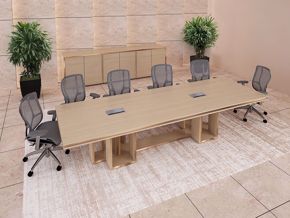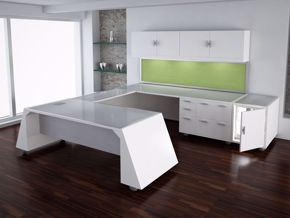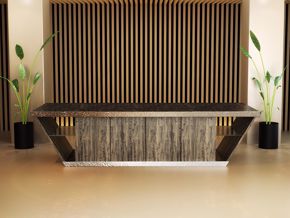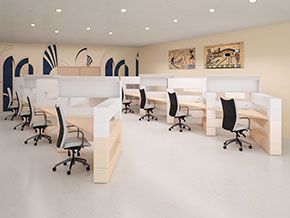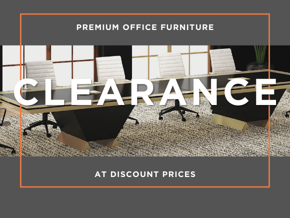The conundrum when looking for cool modern office furniture is that the price for the great-quality stuff is very high. Lower-priced furniture in the marketplace is priced right but looks so…well…average. There is a reason for that.
When we consider the furniture itself, there are two key ingredients to pay attention to: materials and labor. Looking at these two ingredients and understanding how they are controlled on the construction side of things will help you make better choices on the buyer’s side.
What we want to do here is look at the direct costs and see how we can lower what you spend, improve quality, and/or get more value for the price you end up deciding on. This way, you won’t feel as if you need to cut back on paperclips just to afford office furniture. 😊
If we look at why lower-priced office furniture typically lacks style, there are a few reasons:
- Some construction materials are already premade in the marketplace. These materials are pre-sized, pre-colored, and applied to low-stability substrates. Materials like melamine or MDF, for example, are available by the sheet, and are sold rather inexpensively. Furniture fabricators use materials like these to lower the costs of materials.
- It saves construction time because materials can be used right out of the box, so to speak. Now, if we are banging out many copies of the same item, it will bring the cost down.
- Lower labor costs for workers outside the U.S. who are willing to work for lower-than-low wages. Many companies that are willing to capitalize on this environment, which allows them to bring low-cost furniture to the market.
Conversely, custom office furniture is a different species. Fabricating companies can still elect to use readymade, lower-priced materials available in the marketplace. This can cut the cost of your furniture a bit.
The key two-part furniture ingredient (materials and labor) is made up up of a smaller cost percentage in materials, and a larger one in labor. The problem is that lowering just the cost of materials will only lower the smaller percentage of the equation while the larger one (labor) remains.
The bigger part of the problem is that the quality of the furniture is only a good as what it’s made of, and there are extreme limits to the fabrication of readymade materials. They can only be used to make flat panels, which takes away all the cool, creative ideas you are looking for in modern office furniture while giving away too much in quality.
The ideal way to save money on modern office furniture is to have it fully made outside the country using lower-cost labor…or so one might think. There are a few issues with that, however:
- Lower labor costs don’t equal quality modern office furniture craftsmanship.
- Domestic-grade materials are far superior to imports.
- Fully crafted furniture takes up too much space in the shipping container, which, when factored in with size and fit, will create a cost and logistical nightmare.
- Lastly, the risk of damage in shipping is too great, creating delays and new problems.
The biggest contributor to price with stateside design/construction of modern office furniture is detail. Attention to detail adds to production time, which adds cost to your modern office furniture.
If you are having modern furniture built to spec, there are two ways you don’t want to cut corners. One is construction materials (the foundation of your furniture); the other is construction detail (the fit and finish of your office furniture).
The best place to save money is in the add-ons—extra materials that run the price up. Substituting a lower-priced add-on that still adds interest to your modern office without breaking the bank is the way to go. The second place to look for savings is reducing add-on frills in construction: use a straight cut in place of a curve, or a plainer design component with fewer details. Less detail saves production time. It’s true that you may not have all the glitz and glamor of the original furniture idea, but you will have a piece of furniture that is well-made with modern styling.


